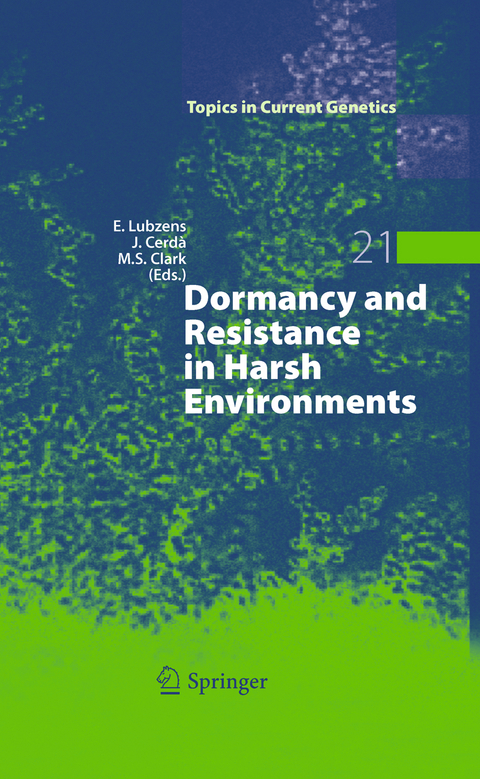
Dormancy and Resistance in Harsh Environments
Springer Berlin (Verlag)
978-3-642-26431-3 (ISBN)
Many organisms have evolved the ability to enter into and revive from a dormant state. They can survive for long periods in this state (often even months to years), yet can become responsive again within minutes or hours. This is often, but not necessarily, associated with desiccation. Preserving one's body and reviving it in future generations is a dream of mankind. To date, however, we have failed to learn how cells, tissues or entire organisms can be made dormant or be effectively revived at ambient temperatures. In this book studies on organisms, ranging from aquatic cyanobacteria that produce akinetes to hibernating mammals, are presented, and reveal common but also divergent physiological and molecular pathways for surviving in a dormant form or for tolerating harsh environments. Attempting to learn the functions associated with dormancy and how they are regulated is one of the great future challenges. Its relevance to the preservation of cells and tissues is one of the key concerns of this book.
Akinetes: Dormant Cells of Cyanobacteria.- Saccharomyces cerevisiae Spore Germination.- Dormancy in Plant Seeds.- Bud Dormancy in Perennial Plants: A Mechanism for Survival.- LEA Proteins: Versatility of Form and Function.- A Role for Molecular Studies in Unveiling the Pathways for Formation of Rotifer Resting Eggs and Their Survival During Dormancy.- Anhydrobiotic Abilities of Tardigrades.- Cryoprotective Dehydration: Clues from an Insect.- A Molecular Overview of Diapause in Embryos of the Crustacean, Artemia franciscana.- An Exploratory Review on the Molecular Mechanisms of Diapause Termination in the Waterflea, Daphnia.- Metabolic Dormancy and Responses to Environmental Desiccation in Fish Embryos.- Mammalian Hibernation: Physiology, Cell Signaling, and Gene Controls on Metabolic Rate Depression.- Lessons from Natural Cold-Induced Dormancy to Organ Preservation in Medicine and Biotechnology: From the "Backwoods to the Bedside".
| Erscheint lt. Verlag | 13.10.2012 |
|---|---|
| Reihe/Serie | Topics in Current Genetics |
| Zusatzinfo | XII, 284 p. 46 illus., 16 illus. in color. |
| Verlagsort | Berlin |
| Sprache | englisch |
| Maße | 155 x 235 mm |
| Gewicht | 456 g |
| Themenwelt | Naturwissenschaften ► Biologie ► Mikrobiologie / Immunologie |
| Naturwissenschaften ► Biologie ► Zellbiologie | |
| Schlagworte | aestivation • akinete • Biotechnology • brumation • crustacea • Desiccation • Diapause • dormancy • dormant state • Embryo • genes • Hibernation • Mammalia • Molecular mechanisms • Physiology • Protein • proteins • termination • tissue |
| ISBN-10 | 3-642-26431-X / 364226431X |
| ISBN-13 | 978-3-642-26431-3 / 9783642264313 |
| Zustand | Neuware |
| Haben Sie eine Frage zum Produkt? |
aus dem Bereich


